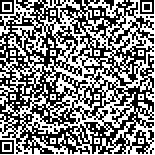下载中心
优秀审稿专家
优秀论文
相关链接
摘要

随着高分辨率合成孔径雷达的快速发展, SAR系统中所含的数据量越来越大, 必须对大量的复图像数据进行压缩, SAR复图像数据的压缩不同于SAR实图像的压缩, 通常对相位特性的保持要求很高, 所以压缩SAR复图像成为研究中的难点。在分析复图像数据经过小波变换后的相关性变化, 研究了使用小波变换块自适应矢量量化(WT-BAVQ)压缩合成孔径雷达复图像的理论依据及具体方法。对一幅复图像进行压缩和解压缩, 计算其平均空域相关值和平均相位相关系数, 给出了解压缩之后的图像。与块自适应矢量量化(BAVQ), 小波变换
With the development of high-resolution SAR systems, it is necessary to develop image compression techniques to compress these products because the volume of data in SAR systems is increasing rapidly. Unlike the compression of SAR real images, the compression of SAR complex images usually needs to keep the phase information which is a difficulty task. In this paper, the correlation of complex SAR images data before and after the wavelet transform is analyzed. Then the theory and methodology of a wavelet-based compressing method for SAR complex images, the Wavelet Transform Block Adaptive Vector Quantization (WT-BAVQ) algorithm, is presented. At the same time, as the compression is performed to a SAR complex image with WT-BAVQ, the Average Spatial Correlation (ASC) and Average Phase Correlation Coefficient (APCC) are achieved and the decompressed image is given. Moreover, the comparison of ASC and APCC is made with Block Adaptive Vector Quantization (BAVQ), Wavelet Transform Vector Quantization (WT-VQ) and wavelet transform block adaptive quantization (WT-BAQ). The experiments manifest that with the same compression ratio, the ASC of WT-BAVQ is higher than that of the other three algorithms.

